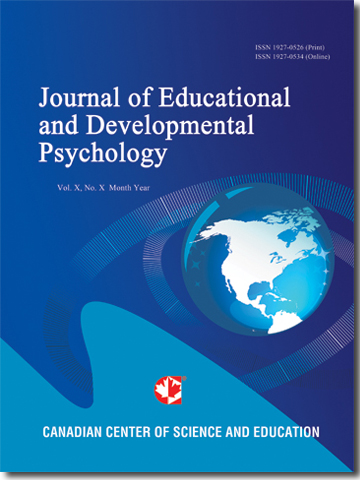How Prospective Direct and Indirect Reciprocity Influence 4- to 6-Year-Old’s Sharing
- Yue Song
- Yun Huang
- Yunqing Shi
- Fenglin Zang
Abstract
Although an abundance of evidence support that preschoolers use reciprocity as a reply to others, lesser is known about how they use this strategy in initiating social interactions. Aiming to explore this question, the current study focused on two forms of prospective reciprocity, direct and indirect (downstream) reciprocity. Two studies were conducted in which the chance for prospective reciprocity was implicit (study 1) and explicit (study 2). Specifically, 4- to 6-year-olds were asked to share stickers with a non-shown recipient, a shown recipient, or a non-shown recipient while a witness was observing. In study 1, preschoolers did not know whether the shown recipient/witness would interact with them later. In study 2, they knew the shown recipient/witness would be asked to share with them subsequently. Results revealed that, despite the implicit/explicit chance of prospective reciprocity, preschoolers shared more in the prospective direct reciprocity condition than the control/prospective indirect downstream reciprocity conditions. In addition, comparing the two studies found no difference found between the implicit and explicit situations. Overall, these findings indicate that preschoolers have taken direct reciprocity, rather than indirect (downstream) reciprocity in guiding their initial sharing with others. Implications of these findings are further discussed.
- Full Text:
 PDF
PDF
- DOI:10.5539/jedp.v13n2p1
Journal Metrics
(The data was calculated based on Google Scholar Citations)
1. Google-based Impact Factor (2021): 1.11
2. h-index (December 2021): 29
3. i10-index (December 2021): 87
4. h5-index (December 2021): N/A
5. h5-median (December 2021): N/A
Index
- Academic Journals Database
- CNKI Scholar
- Copyright Clearance Center
- CrossRef
- Elektronische Zeitschriftenbibliothek (EZB)
- EuroPub Database
- Excellence in Research for Australia (ERA)
- Harvard Library
- Jisc Library Hub Discover
- JournalSeek
- JournalTOCs
- LIVIVO (ZB MED)
- LOCKSS
- MIAR
- Open Access Journals Search Engine(OAJSE)
- PKP Open Archives Harvester
- Publons
- ROAD
- Scilit
- SHERPA/RoMEO
- Standard Periodical Directory
- Stanford Libraries
- Technische Informationsbibliothek (TIB)
- UCR Library
- UoB Library
- WorldCat
- Zeitschriften Daten Bank (ZDB)
Contact
- Carol WongEditorial Assistant
- jedp@ccsenet.org
